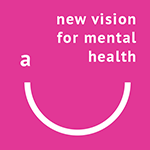This article has been written by Dr. Daryl Chow and published on his Mind of Health blog. It begins:
“This is for those who are thinking about seeking help. Maybe you are wondering, unsure of who to go to and what to look out for. Or maybe you just need a reason to give a shot at therapy/counselling before you take a psychotropic drug for your emotional problems.
Here’s what you need to know.
Effectiveness of Psychotherapy
Based on more than 50 years of psychotherapy outcomes research, the average treated person [is] better off than 80% of those who did not receive treatment (Miller, Hubble, Chow, & Seidel, 2013; Wampold & Imel, 2015). This is equivalent to an effect size (i.e., magnitude of change) of 0.8, which is considered as a large effect.
Conventionally used in evidence based medicine, the number needed to treat [NNT] refers to the number of patients needed to receive treatment in order to experience a positive outcome relative to untreated patients. To put into context, here are the following NNTs for various treatments (Note: smaller numbers indicate more effective a treatment):

Surprising Fact #1: Psychotherapy is more effective than most medical treatments and has lesser side-effects.
Psychotherapy has been shown to reduce the use of medications, consultations with primary-care physicians, length of inpatient stays, and general health care expenditures by 60% to 90% (Chiles, Lambert, & Hatch, 1999; Kraft, Puschner, Lambert, & Kordy, 2006).
More recently, based on a real-world study of over 22,000 clients in a five-year period, the data suggests outpatient psychotherapy has a large reduction of work disability days (41.8%), hospitalisation days (27.4%), and inpatient costs (21.5%). In terms of long-term effects, the researchers found that the year after therapy, the number of work disability days was lower (23.8%) (Altman et al., 2016).
From an investment standpoint, for every dollar spent in terms of care, $2 to $3 are returned! And for every dollar spent in terms of care, it resulted in 3 to 5 times of benefit for health returns (Chisholm et al., 2016). It’s hard to find any other area in healthcare for such returns, with few side-effects …”
You can read more from here.




